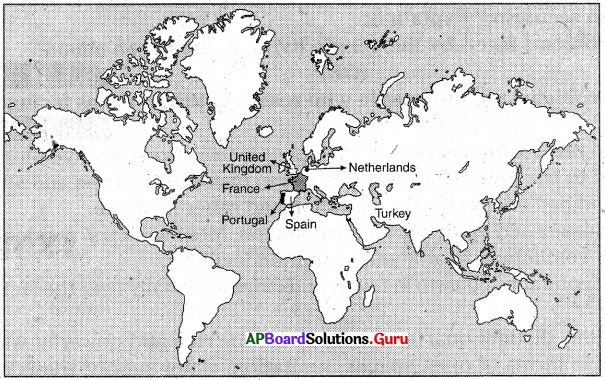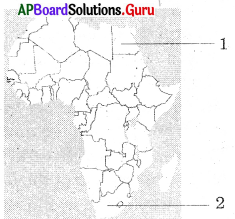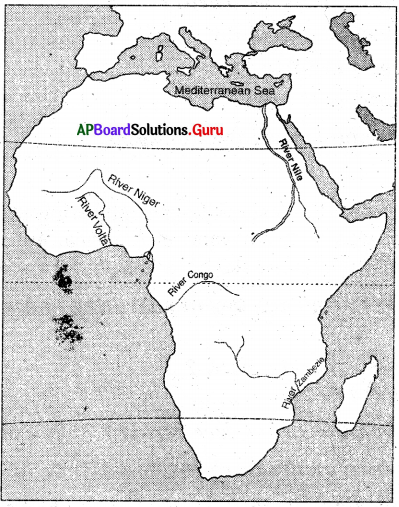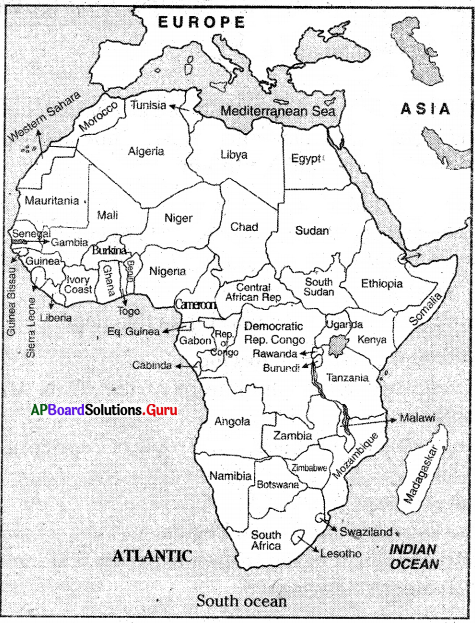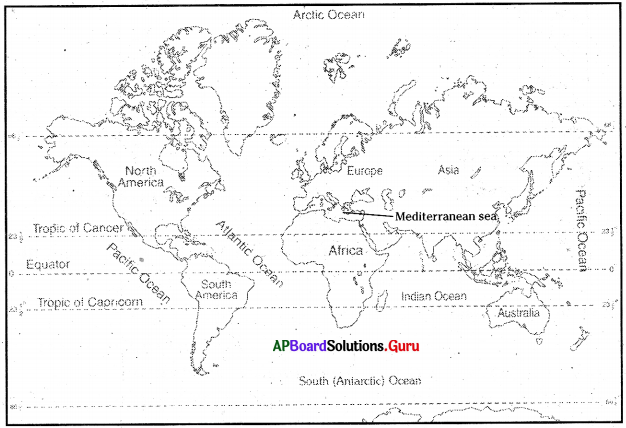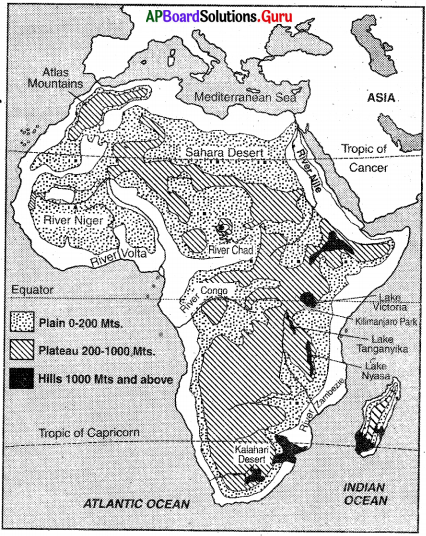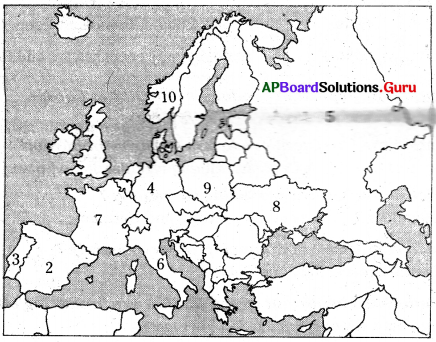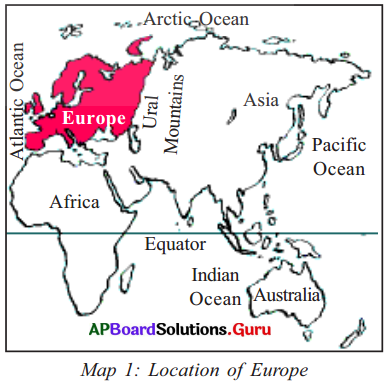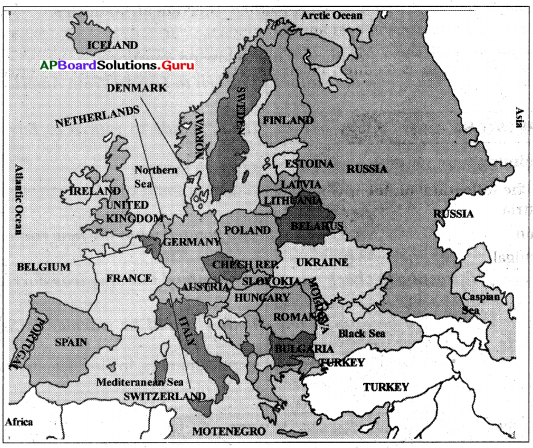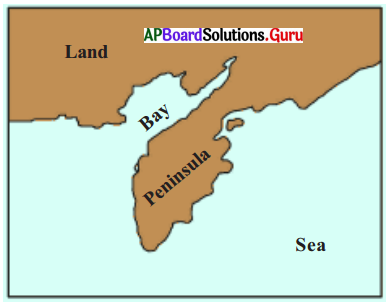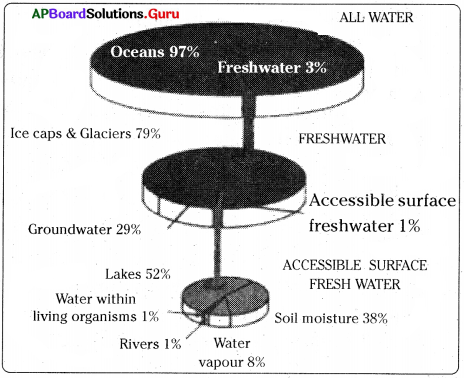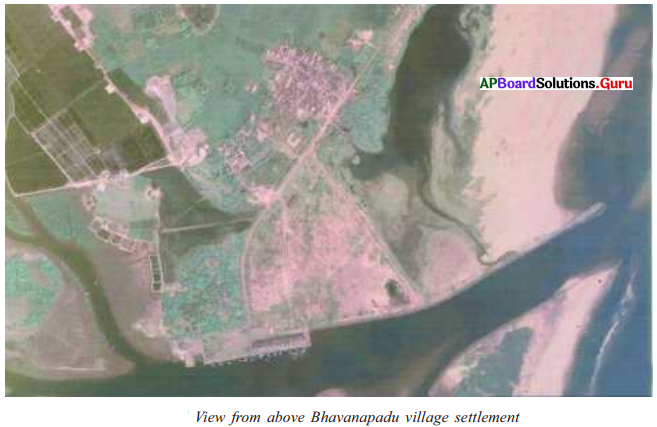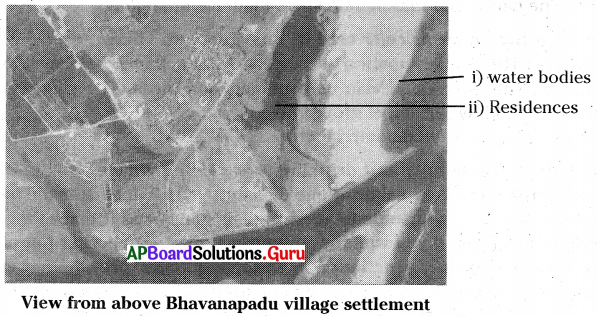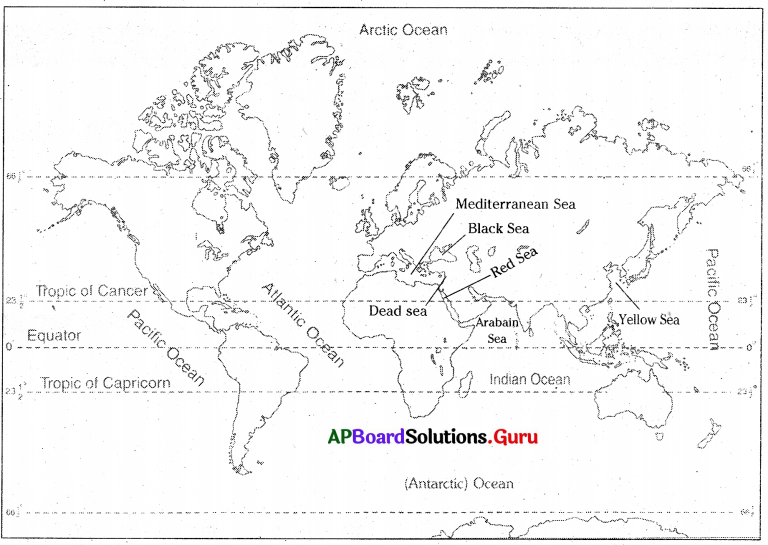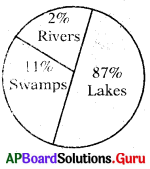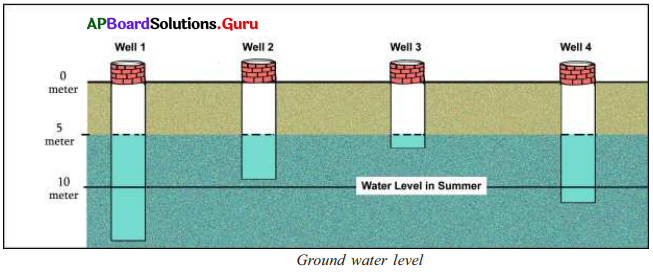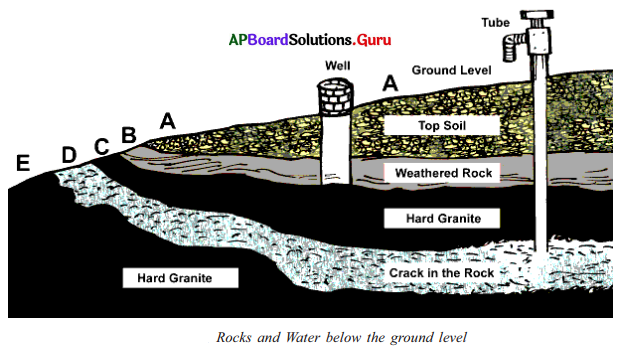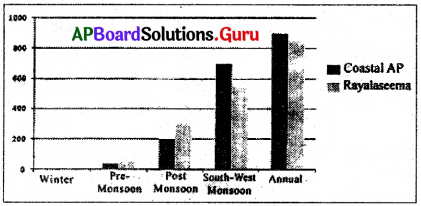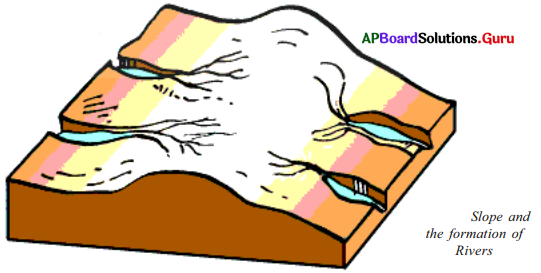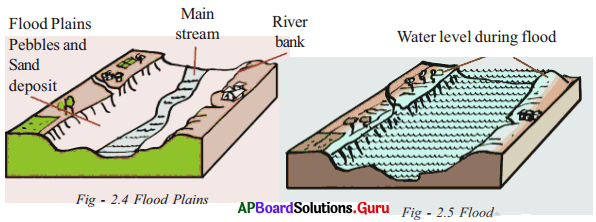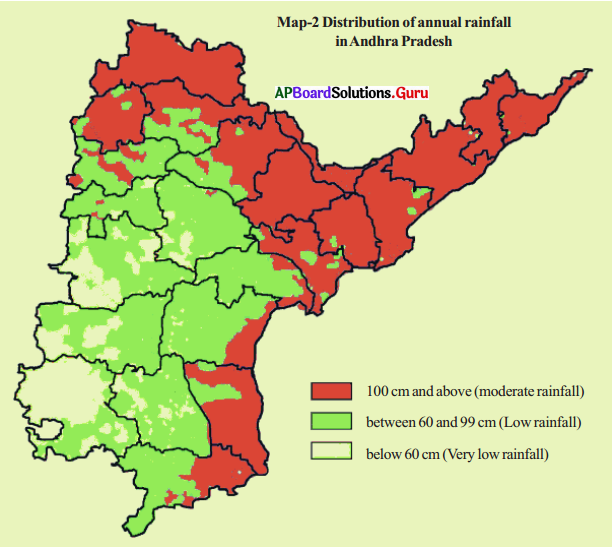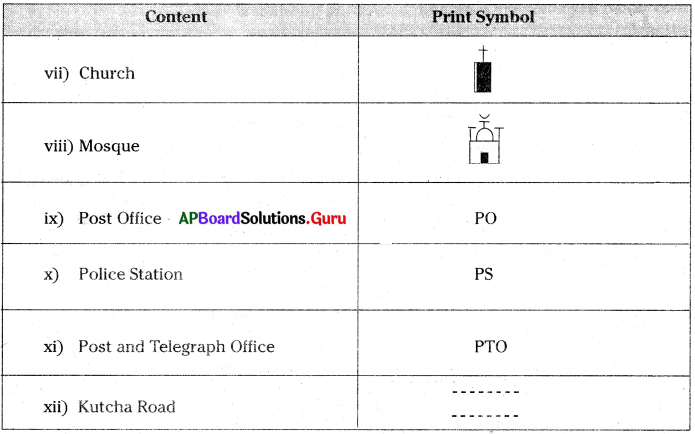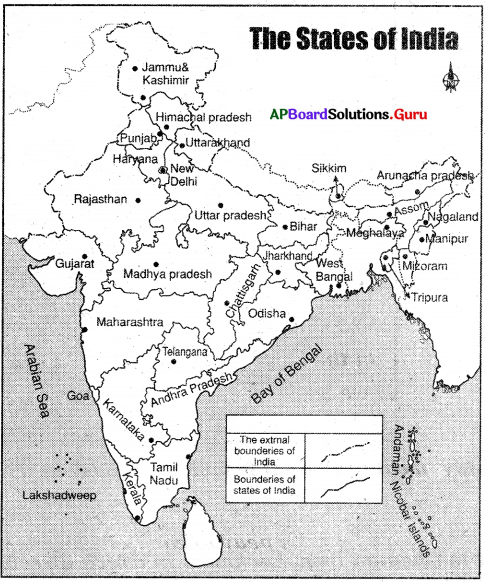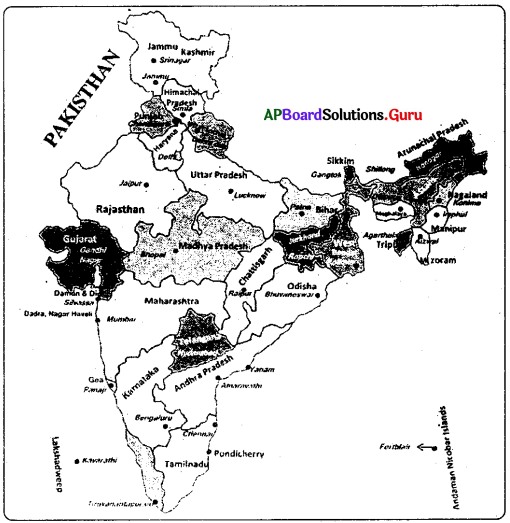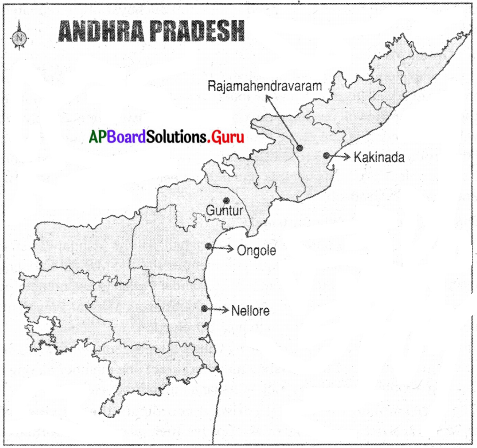AP State Syllabus 7th Class Social Important Questions 9th Lesson Production in a Factory – A Paper Mill
Question 1.
The production of bamboo in Andhra Pradesh during different periods is given in the table below. Study the table and answer the following questions. Long Bamboo Production in Andhra Pradesh.
| Year | Long Bamboo (in Lakh No.s) |
| 2011 – 12 | 2 |
| 2012 – 13 | 4 |
| 2013 – 14 | 7 |
| 2014 – 15 | 8 |
| 2015 – 16 | 9 |
i) Draw a rough bar diagram to represent the data.
Answer:
Bargraph. Long Bamboo Production in Andhra Pradesh

ii) What trend do you observe in bamboo production over the years?
Answer: Bamboo production has been increasing over the years.
![]()
Question 2.
As a student write any four suggestions you would like to give for reducing paper wastage.
Answer:
- Copy on both sides of the paper.
- Buy recycled paper.
- Use chlorine-free paper.
- Eliminate unnecessary subscriptions.
- Use a routing slip.
Question 3.
“One of the major challenges before us is to find out how to balance our need for various kinds of goods and the ill effects of the factory system and how to make the life of workers comfortable and dignified.”
What do you understand by “to balance our need for various kinds of goods”? Discuss some of the ill effects of the factory system and suggest ways to make the life of workers comfortable and dignified.
Answer:
Basing on the resources available and the overproduced in the factories we can balance our needs.
The owners also should produce goods according to the demand of the public. This also can balance our needs.
Ill effects of the factory system:
- Usually, factory owners try to reduce their costs by employing casual workers even for regular work.
- Sometimes they bring new machines which require fewer workers.
Suggestions:
In such situations, the workers and their unions resort to agitations and then bargain with the managers to improve their lot.
![]()
Question 4.
Copy the following Flow Chart into your main answer sheet and fill the empty boxes with the clues given below.
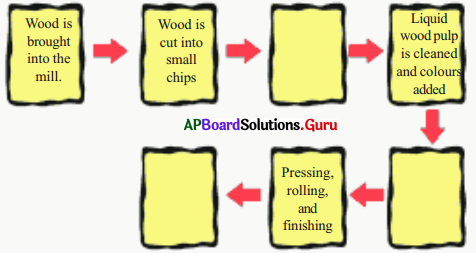
Clues:
- The small wood chips are sent to the fiber line section. The wood chips are boiled with some chemicals. Then it becomes creamy.
- Wood is brought into the mill.
- The liquid pulp is Spread on thin screens over a cylinder.
- The paper is cut in the cutting machines according to the size required.
Answer:

Question 5.
Have you ever visited any factories? Describe it.
Answer:
Yes, I have visited Ice factory, a milk factory, and a Rajahmundry paper mill. Those were thrilling experiences to me. When I went to Vijayawada I visited Ice factory in Durgapuram. I felt so happy when I saw the ‘Ice blocks’ under the wooden floor.
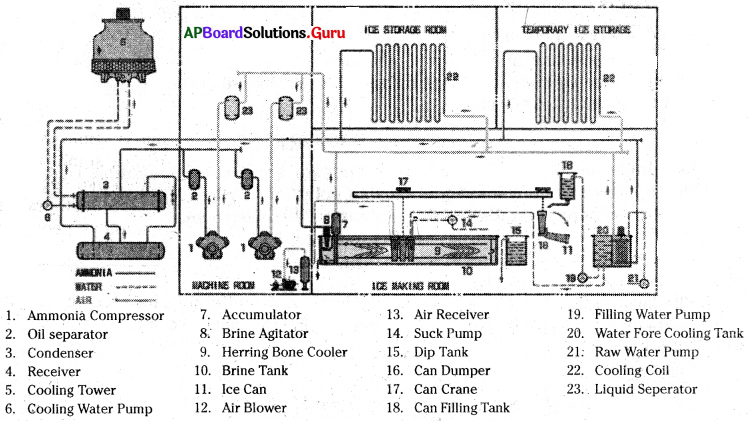
I saw this type of arrangement there. When I collected the water drops into my hands, I felt it is very cool.
![]()
Question 6.
What is called raw material?
Answer:
Materials required to produce a commodity are called raw materials.
Question 7.
Observe the given picture and answer the questions.

a. What is the wood in the lorry?
Answer:
Bamboo
b. What is the machine in the picture?
Answer:
It is a Bamboo lifter.
c. Is anybody operating the machine? (Imagine)
Answer:
Yes, somebody is operating the machine.
d. Where is the wood?
Answer:
The wood is in the truck.
e. What is it used for?
Answer:
It is used for making paper.
Question 8.
Read the following passage and answer the questions.
WORKING IN PAPER MILL
A factory employs a large number of workers of different kinds – some work on machines, some help them, some take care of electrical fittings, some help in transporting the materials, etc. Some of them are highly qualified like engineers while others may have education from ITI and polytechnic colleges. Still, others may be illiterates doing manual work like cleaning. A factory also employs people on different terms and conditions.
a. Whom does a factory employ?
Answer:
A factory employs a large number of workers of different kinds – some work on machines, some help, some help in transporting the materials, etc.
b. Who is highly qualified in them?
Answer:
Engineers are highly qualified in them.
c. What are the other two courses mentioned here?
Answer:
I.T.I. and polytechnic.
d. Who does manual work?
Answer:
Some others, maybe illiterates, do the manual work.
e. How does a factory employ people?
Answer:
A factory employs people on different terms and conditions.
![]()
Question 9.
Read the following passage and answer the questions.
Factories use heavy machinery which is run by electricity. Paper mill needs electricity for operating its machines. For example, the paper mill requires nearly 25 Mega Watt every year. More than half of the electricity requirement is met through the factory’s own power generators. Besides electricity, the mill requires a large quantity of clean water throughout the year.
1. ………. use heavy machinery.
Answer:
Factories
2. The paper mill requires nearly ………… every year,
Answer:
25 Mega Watt
3. Besides electricity, the mill requires a large quantity of ………….. water.
Answer:
Clean Water
Question 10.
Read the following and answer the questions.
WORKING HOURS AND SHIFTS
This paper mill runs all 24 hours a day. The workers work in three shifts of eight hours each. They are ‘A’, ‘B’ and ‘C’ shifts. In each shift, about 800-900 Workers are at work.
A Shift: 6 AM to 2 PM
B Shift: 2 PM to 10 PM
C Shift: 10 PM to 6 AM (Night Shift)
Night shift workers get a special allowance.
1. The paper mill runs ……….. in a day.
Answer:
all 24 hours.
2. A, B, C are ……………
Answer:
shifts
3. ……….. workers get a special allowance.
Answer:
Night shift
![]()
Question 11.
Why do you think the paper mill works round the clock? Compare this with how agricultural fieldwork takes place.
Answer:
Paper is the most important thing we use. It is useful to us in many ways. To meet the need, the paper mill works through the day and night.
The agriculture fieldwork is quite different from this millwork. The workers in the fields work for 4 to 6 hours only.
Question 12.
Why are the authorities of paper mills dividing the work into shifts?
Answer:
Nobody can work continuously for 24 hours. There is a need for more production. So the authorities are dividing the work into shifts.
Question 13.
Draw a picture of the factory you visited and using your imagination describe 300 words on what could happen inside a factory.
Answer:
Last year I went to my grandmother’s house in Eluru during the vacation. There I went to visit ‘Sri Krishna Jute Mill’. It was established before Independence. It is giving employment opportunities to many people. At 8.00 A.M. the ‘Siren’ was blown. Then the first shift started. Many employees entered the factory with cheerful faces and meals carriages in their hands. They started their work.
There were many heavy machines in the factory. Administrative Block and Work Block are separate. There were some arrangements for staff entertainment also like carroms, chess, etc. They have three shifts daily.
I found the following steps in Jute processing.
Jute Bales in Godowns
↓
Selection
↓
Softening
↓
Piling/conditioning
↓
Carding
↓
Drawing and Doubling
↓
Spinning
↓
Winding
↓
Beeming / Dressing
↓
Weaving
↓
Calendering
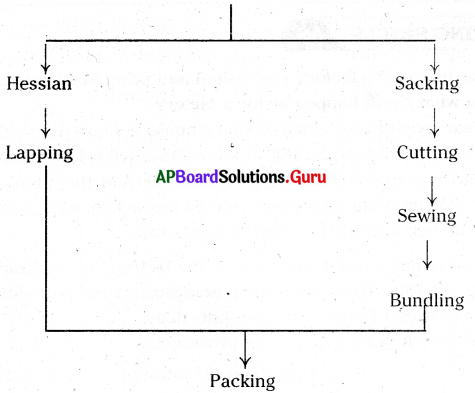
I found beautiful jute bags there.
When I had a talk with some employees I came to know the following issues about them.
- They work very hard in 3 shifts.
- The salaries were very less.
- There were no educational facilities for their children.
- The staff were not provided with quarters.
- Once the factory was locked out due to some reasons.
After knowing all these I felt sorry for their living conditions.
![]()
Question 14.
Mark the four districts with paper mills on the map of Andhra Pradesh.
Answer:

